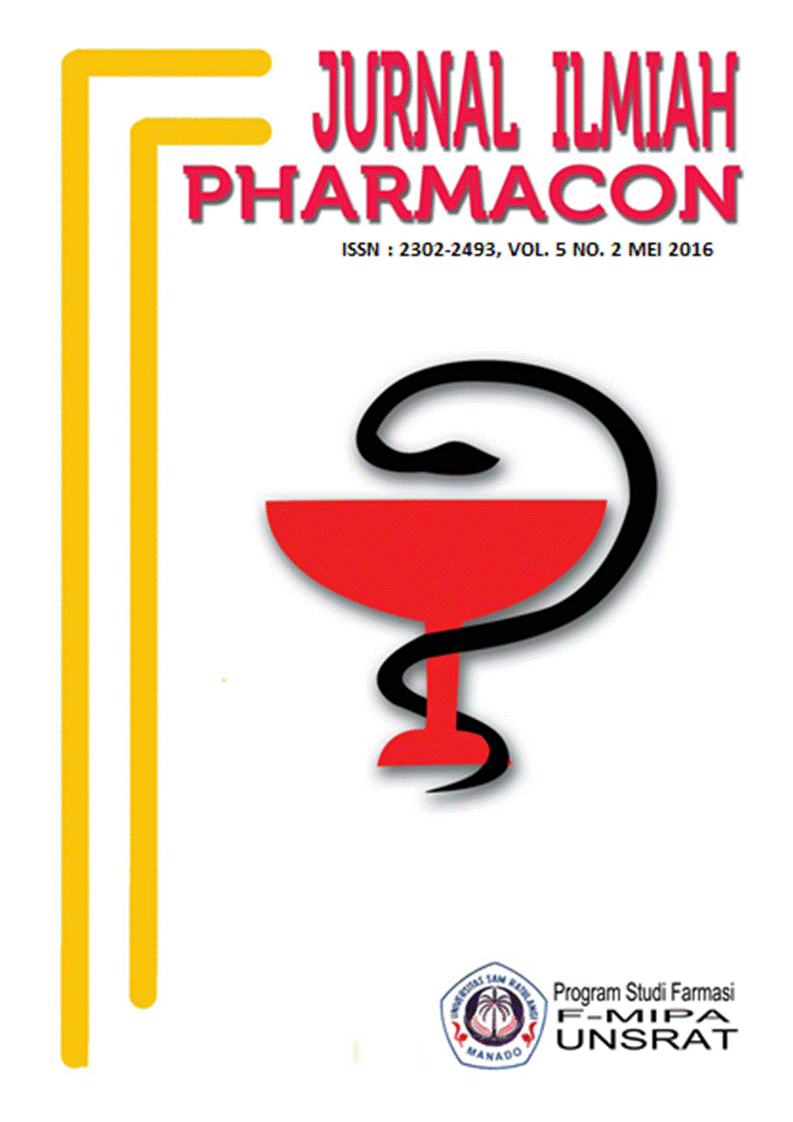PERBEDAAN PENURUNAN TEKANAN DARAH LANSIA DENGAN OBAT ANTI HIPERTENSI DAN TERAPI RENDAM AIR HANGAT DI WILAYAH KERJA PUSKESMAS ANTARA TAMALANREA MAKASSAR
DOI:
https://doi.org/10.35799/pha.5.2016.12194Abstract
PERBEDAAN PENURUNAN TEKANAN DARAH LANSIA DENGAN OBAT ANTI HIPERTENSI DAN TERAPI RENDAM AIR HANGAT DI WILAYAH KERJA PUSKESMAS ANTARA TAMALANREA MAKASSAR
Â
Ilkafah1)
1)Program Studi Ilmu Keperawatan Fakultas Kedokteran Universitas Hasanuddin
Â
ABSTRACT
Hypertension in the elderly is still be number one disease especially in Puskesmas Antara Tamalanrea Makassar. Treatment in hypertension include pharmacological and nonpharmacological therapy. One nonpharmacological therapy is foot bathing in warm water. Foot bathing in warm water er is one of the hypertension therapy that benefit to dilatation of blood vessels and enhancing blood circulation. The aim of this study was to determine differences in the effectiveness of the anti-hypertensive drugs and foot bathing in warm water. This research was a quasy-experimental with two-group pre-post test design and was evolved 52 respondents were divided in two group with purposive sampling. The first group was given foot bathing in warm water 2 times for 15 minutes and was given for 2 weeks, and the second group was given captopril 12.5 mg taken 2 times a day. The datas were analyzed by Wilcoxon signed rank test and Mann Whitney test with significance values ​​p£ 0.05.. Analysis for each intervention using the Wilcoxon rank test with significance level α <0.05 and to effectiveness of both therapies using Mann Whitney Test. The results showed no difference between the foot bathing therapy in warm water and the use of captopril (p = 0.154 and p = 0.675, p> 0.05). Both of foot bathing in warm water and captopril are equally effective in lowering blood pressure in the elderly. Further research is needed to find another therapy to decrease blood pressure.
Keywords: Foot bathing in warm water, Hipertension, Elderly
Â
ABSTRAK
pada lansia sampai saat ini masih menjadi penyakit nomor satu terutama di wilayah kerja Puskesmas Antara Tamalanrea Makassar. Terapi hipertensi bisa menggunakan farmakologi dan nonfarmakologi. Salah satu terapi nonfarmakologi untuk penatalaksanaan hipertensi adalah terapi rendam kaki air hangat. Rendam kaki air hangat adalah salah satu terapi hipertensi yang bermanfaat untuk mendilatasi pembuluh darah dan melancarkan peredaran darah. Tujuan penelitian ini adalah untuk mengetahui perbedaan efektivitas penggunaan obat anti hipertensi (captopril) dengan rendam kaki air hangat. Desain penelitian yang digunakan adalah quasy eksperiment dengan rancangan terapi pada dua kelompok. sampel didapatkan sebanyak 52 responden yang dibagi menjadi 2 kelompok dengan cara pengambilan sampel purposive sampling. Kelompok pertama diberikan terapi rendam kaki air hangat 2 kali sehari pagi dan sore selama 15 menit dan diberikan selama 2 minggu, sedangkan kelompok kedua diberikan captopril 12,5 mg diminum 2 kali sehari. Analisis untuk tiap intervensi menggunakan uji Wilcoxon Rank Test dengan tingkat signifikasi α < 0,05 sedangkan untuk mengetahui perbedaan keefektifan kedua terapi menggunakan uji Mann Whitney Test. Hasil penelitian menunjukkan tidak ada perbedaan bermakna antara terapi rendam kaki air hangat dengan pemberian captopril (p= 0,154 dan p= 0,675 dengan p >0,05). Pemberian terapi rendam kaki air hangat dan captopril sama-sama efektif dalam menurunkan tekanan darah pada lansia. Diperlukan penelitian lanjutan untuk mencari terapi lainnya dalam menurunkan tekanan darah.
Kata Kunci : Rendam Kaki Air Hangat, Hipertensi, Lansia
Â
Downloads
Published
How to Cite
Issue
Section
License
Authors who publish with this journal agree to the following terms:
- Authors retain copyright and grant the journal right of first publication with the work simultaneously licensed under a Creative Commons Attribution-NonCommercial 4.0 International License that allows others to share the work with an acknowledgement of the work's authorship and initial publication in this journal.
- Authors are permitted and encouraged to post their work online (e.g., in institutional repositories or on their website) prior to and during the submission process, as it can lead to productive exchanges, as well as earlier and greater citation of published work (See The Effect of Open Access)










